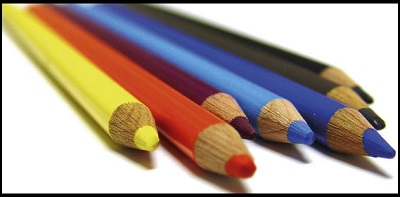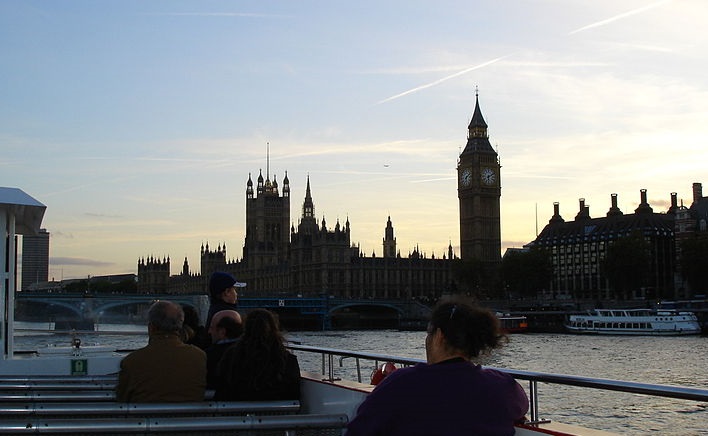This traditional activity for children can now bring on a 3D experience through mobile devices.
There isn’t anything new about having a child sit down with a box of crayons to bring a color to a black and white image in a coloring book, but researchers have now added augmented reality to the experience that could allow kids to see a three dimensional version of their projects through the screens of smartphones or tablets.
With the right AR app, the drawing is monitored and a child can enjoy an enhanced experience from the activity.
For example, if a child were to fill in a coloring book image of an elephant, just as he or she usually would, the augmented reality would make it possible for the colors to be filled in on a tablet or smartphone screen in real-time and can bring an animated, 3D version of that elephant to life on the device screen. That animation is then integrated into the video that the child can watch.
The augmented reality app maintains its core focus on the typical coloring activity while enhancing what is viewed.
 On top of the image the child is coloring, it creates an AR overlay on top of reality that enhances the engagement between the child and the image being colored. The preliminary user testing conducted by researchers was conducted with adults instead of children. What they determined was the majority of users said that their motivation for drawing within the coloring books was increased through the use of the app. In fact 80 percent of the participants in this study said that using the mobile app increased the connection that they felt with a character in the book.
On top of the image the child is coloring, it creates an AR overlay on top of reality that enhances the engagement between the child and the image being colored. The preliminary user testing conducted by researchers was conducted with adults instead of children. What they determined was the majority of users said that their motivation for drawing within the coloring books was increased through the use of the app. In fact 80 percent of the participants in this study said that using the mobile app increased the connection that they felt with a character in the book.
The researchers were from ETH Zurich, the EPFL university in Switzerland, and from Disney. They made a presentation of this new AR technology based experience in Fukuoka, Japan, at the IEEE International Symposium on Mixed and Augmented Reality (ISMAR 2015).
While the research is currently being shared primarily within scientific circles, it has already made its way through the tech transfer process, which has already brought to life the Disney Publishing Worldwide and Bendon partnership augmented reality product that was launched earlier in 2015, called “Disney Color and Play”.
If London Assembly member Tony Arbour has his way, mobile devices will be the key tool for tourists.
Conservative London Assembly member and mayoral hopeful, Tony Arbour, believes that there is a great deal to gain from the use of geolocation, QR codes and NFC technology when it comes to expanding the tourism in the city beyond the central area.
Many tourists miss out on some of the best features of the city because they never hear about them.
While Londoners would be able to tell you about the Horniman Museum, the Royal Air Force Museum, Crystal Palace Dinosaurs, and Richmond Park, many tourists are still visiting the core points of interest such as Buckingham Palace and the Tower of London. Essentially, tourists are missing out on some fantastic attractions and those attractions are missing out on the tourists. Arbour feels that if iBeacons using geolocation technology are combined with the use of QR codes, this problem can be rapidly resolved.
The key would be to use a Visit London mobile app which provides relevant information through geolocation tech.
 In order to use it, visitors would simply need to load the app. Then, whenever they travel near iBeacons throughout the city, they would receive information that is relevant to where they are so that they will be more aware of the types of attractions and points of interest that they could be visiting but that they might otherwise have missed.
In order to use it, visitors would simply need to load the app. Then, whenever they travel near iBeacons throughout the city, they would receive information that is relevant to where they are so that they will be more aware of the types of attractions and points of interest that they could be visiting but that they might otherwise have missed.
This will help them to see more than just inner London and to experience a great deal more of the city. It will also help the economic benefits of that tourism to spread outward toward other boroughs of the city.
Arbour has created a report that he has entitled “Unknown London”. He is hoping that Visit London, the tourist agency of the city, will change its current priorities and will use geolocation, QR codes, and other technologies to spread the benefits of tourism to new regions of London. As an example of the way it would work, he stated that “…a tour of London food markets could guide the tourist, via a series of codes or beacons, from one market to another, giving the history of each market, providing up to date vouchers and local dining and of course providing advice transport advice to the next stop on the route.”
 On top of the image the child is coloring, it creates an AR overlay on top of reality that enhances the engagement between the child and the image being colored. The preliminary user testing conducted by researchers was conducted with adults instead of children. What they determined was the majority of users said that their motivation for drawing within the coloring books was increased through the use of the app. In fact 80 percent of the participants in this study said that using the mobile app increased the connection that they felt with a character in the book.
On top of the image the child is coloring, it creates an AR overlay on top of reality that enhances the engagement between the child and the image being colored. The preliminary user testing conducted by researchers was conducted with adults instead of children. What they determined was the majority of users said that their motivation for drawing within the coloring books was increased through the use of the app. In fact 80 percent of the participants in this study said that using the mobile app increased the connection that they felt with a character in the book.
 In order to use it, visitors would simply need to load the app. Then, whenever they travel near iBeacons throughout the city, they would receive information that is relevant to where they are so that they will be more aware of the types of attractions and points of interest that they could be visiting but that they might otherwise have missed.
In order to use it, visitors would simply need to load the app. Then, whenever they travel near iBeacons throughout the city, they would receive information that is relevant to where they are so that they will be more aware of the types of attractions and points of interest that they could be visiting but that they might otherwise have missed.